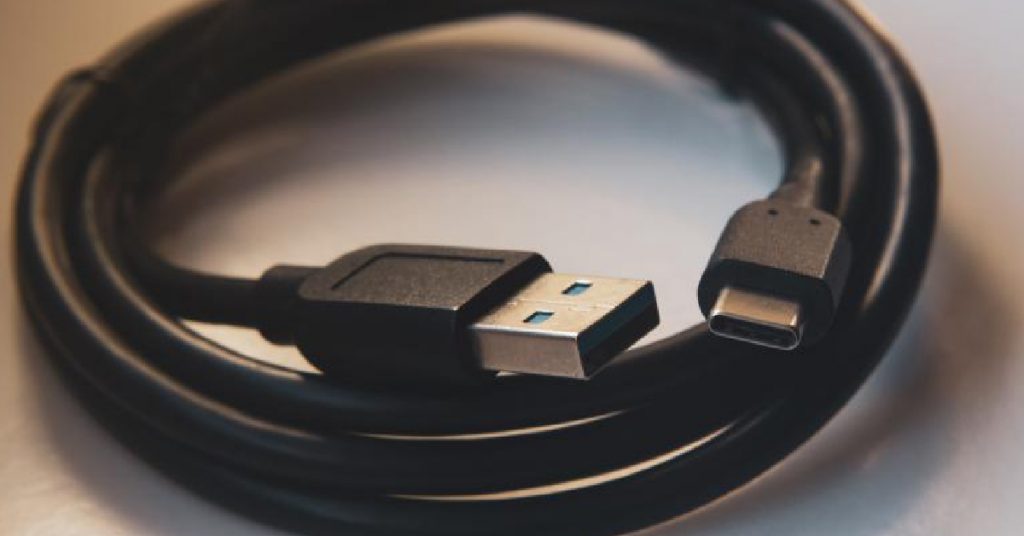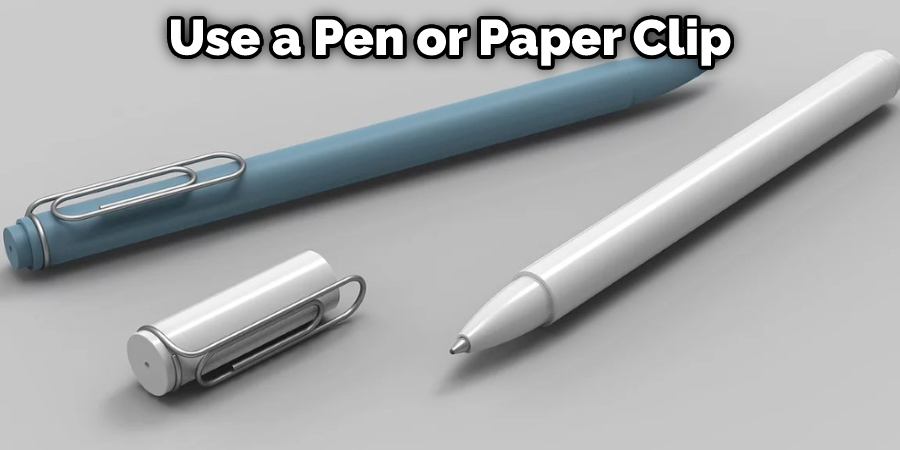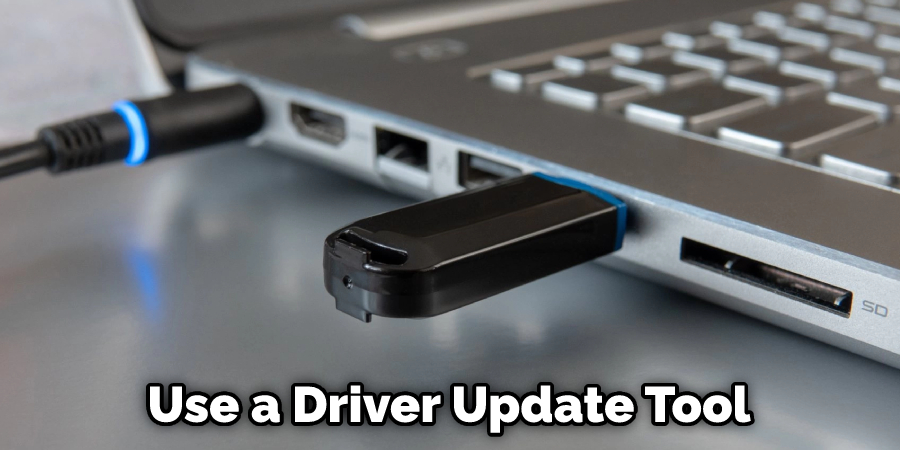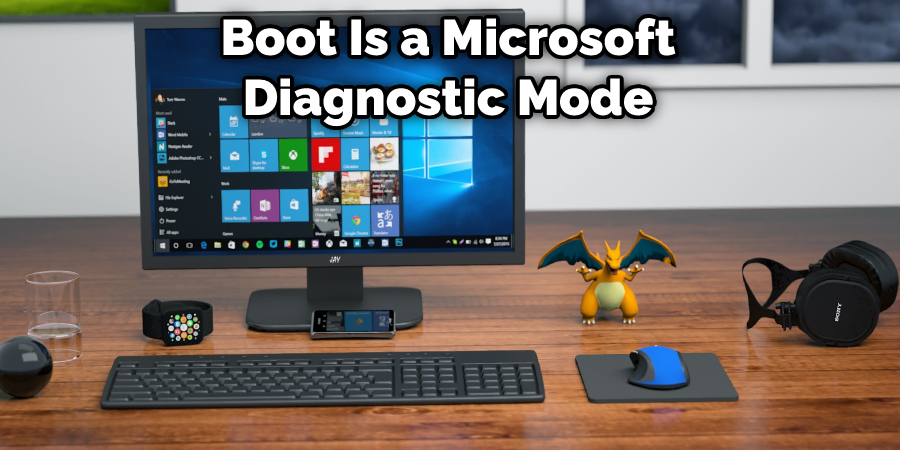There are a few different mirror closet door repair kits available, so be sure to choose the one that best suits the type of damage you have. For example, if your mirror is cracked, you’ll need a glass cutting tool kit.
If you’ve ever had the issue of your USB port being bent and not working properly, don’t worry, you’re not alone. This blog post will show you how to fix a bent USB port. First, look at the images below to see where the problem is located. Then, follow the simple steps we’ve outlined to get your USB port back up and running in no time.
Summary: If your USB port is bent, you can fix it with a few easy steps. First, use a Phillips head screwdriver to remove the screws that hold the port cover in place. Next, remove the port cover and straighten out the wire. Finally, replace the screws and cover.

Things You Will Need:
- A flat head screwdriver
- A needle nose plier
- A pen or a paperclip
How to Fix Bent USB Port Step by Step Guide:
Step 1: Locate the Problem
The first step is to identify where the problem is located. The problem is usually caused by the USB cable inserted into the port at an angle. This can cause the connector to become bent or damaged.
Step 2: Use a Flat Head Screwdriver
The problem is that the USB port is bent. You need to use a flathead screwdriver to pry it up gently, being careful not to damage anything. If the port is severely bent, you may need to use a pair of tweezers or pliers to get a good grip on it. Once the port is raised, you can use the screwdriver to straighten it out gently.
Step 3: Use a Pen or Paperclip
If the port is still not working properly, you can try using a pen or paper clip to straighten it out slightly. However, be careful not to overdo it, as you could permanently damage the port.

Step 4. Use a Needle Nose Plier
If the previous steps haven’t worked, you can try using a needle nose plier to gently grab the end of the USB connector and straighten it out. First, grab the USB connector’s end with a needle nose plier. Next, use your other hand to hold the body of the USB connector, so it doesn’t move. Finally, gently pull the needle-nose plier away from the body of the USB connector while keeping the end of the USB connector in place. This should straighten out the USB connector. If it doesn’t work the first time, try again.
Step 5: Try a Different Cable
If the port is still not working, you may need to try a different USB cable. Sometimes, the cable itself is the problem. Damaged or low-quality cables can cause many problems, including bent USB ports. If you have another USB cable handy, try plugging it into the port and see if that works. If it does, then you know the original cable was the problem. If it doesn’t, the port may be damaged and need to be replaced.
Step 6: Try a Different Computer
If your device isn’t working, you can try plugging it into a different computer to see if that fixes the problem. If it still doesn’t work, the port is probably damaged and you’ll need to get it replaced.
Step 7. Update Your USB Device Drivers
If you’re still having problems, the next thing you can try is to update your USB device drivers. Outdated or corrupt drivers can cause all sorts of problems, so it’s always a good idea to keep them up-to-date. To update your drivers, you’ll need to know what kind of computer you have (PC or Mac) and what kind of USB device you use. Then, you can go to the manufacturer’s website and get the latest drivers. If you’re unsure how to update your drivers, you can use a driver update tool like Driver Easy.

Driver Easy will automatically scan your computer and look for the correct drivers for your devices. You don’t need to know anything about drivers; Find and install Driver Easy, then run it. It will do the rest. Once you’ve updated your drivers, restart your computer and try your USB device again.
Step 8. Use Device Manager
If your USB port is still not working, you can try to use the Device Manager to uninstall and reinstall the driver. This is how you do it:
- Right-click on the Start button and select Device Manager from the menu.
- Expand the Universal Serial Bus controllers section.
- Right-click on the USB port that is not working and select Uninstall from the menu.
- Restart your computer.
- Windows will automatically install the drivers for your USB port.
- Check if the issue is resolved.
Step 9. Use Clean Boot
If your computer isn’t working right, you can try Clean Boot to fix the problem. Clean Boot is a Microsoft diagnostic mode that starts your computer with only the basic drivers and programs. This can help you figure out if a program or driver is causing the problem.

Step 10. Test Your USB Port
Once you’ve tried all the above steps, it’s time to test your USB port. First, you’ll need a USB device you can test with, such as a USB flash drive or a mouse. Then, plug the device into the port and see if it works. If it does, then the port is working, and the problem is with your device. If it doesn’t, the port will most likely be damaged and need to be replaced.
Frequently Asked Questions
Can You Fix Bent Plugs?
When it comes to fixing bent plugs, there are a few different techniques that you can use. The most common is to warm up the plug with a heat gun and then use pliers to straighten it out. If this isn’t possible, you can try using an electric drill or chop saw to remove the entire plug. In some cases, you may also be able to fix them by gluing them back together with hot melt adhesive or epoxy.
When repairing plugs, always keep in mind the safety guidelines for work involving electricity. Make sure that all switches and cords are properly covered and double-checked before beginning any repair project. The plug pin is the point where the electricity enters the plug. The plug must have the proper size of the hole to allow the current to enter, and it must be able to grip the wire snugly.
Can You Fix a Micro USB Port?
Micro USB Ports are the perfect device for portable devices, like smartphones and tablets. However, from time to time they may stop working completely. In most cases, this can be fixed by replacing the micro USB port. Here are a few steps you can take to replace a micro USB port:
- Locate the micro USB port on your device and unscrew the three screws that hold it in place.
- Remove the micro USB port from your device.
Why Does My Phone Only Charge at an Angle?
When you place your phone on a flat surface to charge, the entire battery is charged instead of just the portion that is in contact with the charging cable. Why? Voltage is evenly distributed throughout the whole battery when it’s placed on a flat surface. This process works best if there are no metal parts inside or outside of your device that can conduct electricity.
Why Do I Have to Wrap My Charger Around My Phone?
Many people believe that wrapping your charger around your phone will protect it from being damaged when it’s plugged in. The reality is a little more complicated than that, though.
Actually, there isn’t a definitive answer as to why you should wrap your charger around your phone. Some people believe that doing so will create a tighter connection between the charger and the phone, which will help to protect it in the event of a drop. Others think that the wrapping will just make it difficult to remove the charger if you need to – again, something to consider.
Ultimately, there’s no harm in wrapping your charger around your phone – as long as you’re aware of the potential consequences and use caution when charging your device.
Conclusion
This article has shown you how to fix a bent USB port. You can now fix your USB port without going through the trouble and expense of buying a new phone or laptop. All you need is some household items and a bit of patience. Have you tried this method yourself? Let us know how it worked for you in the comments below!
